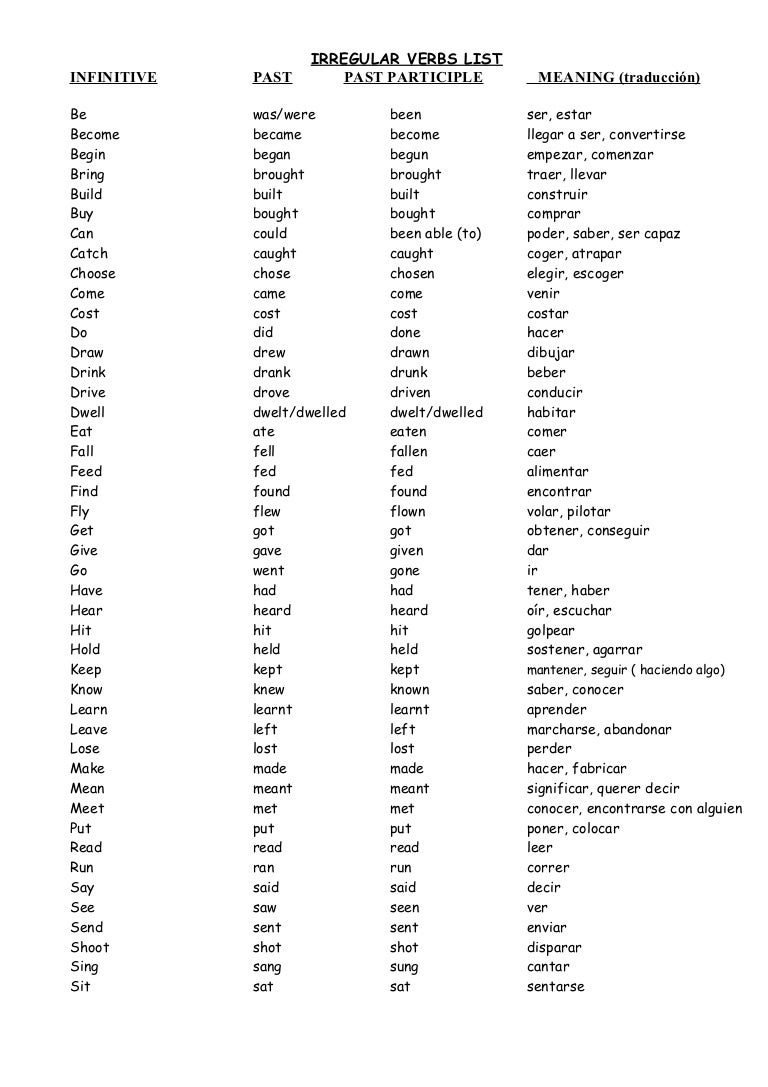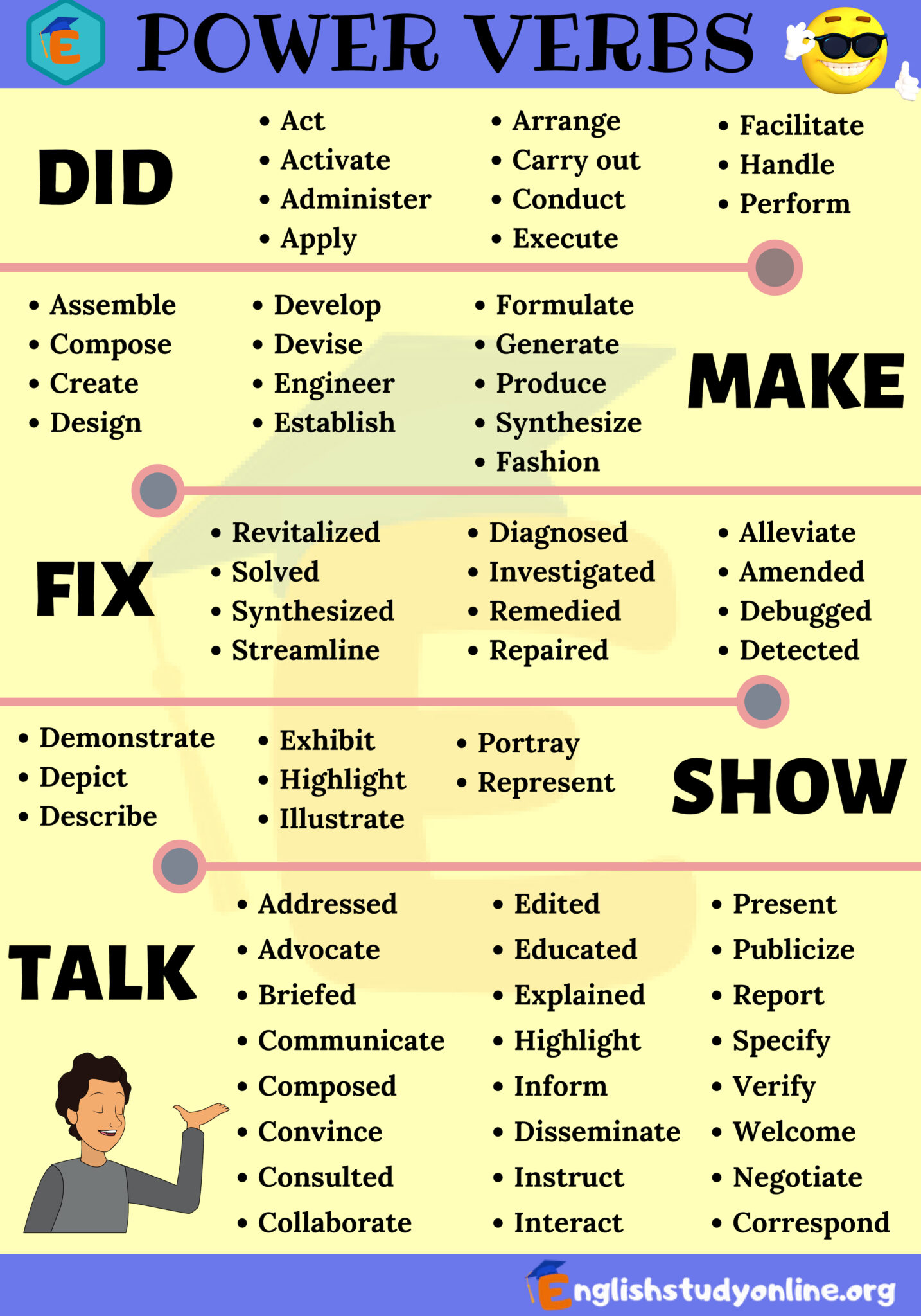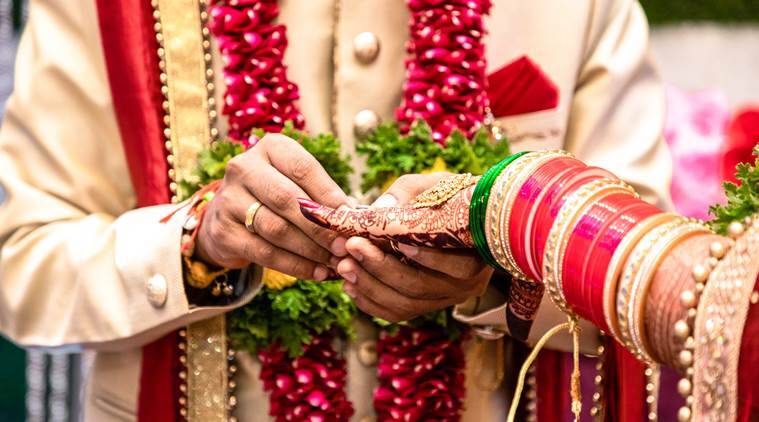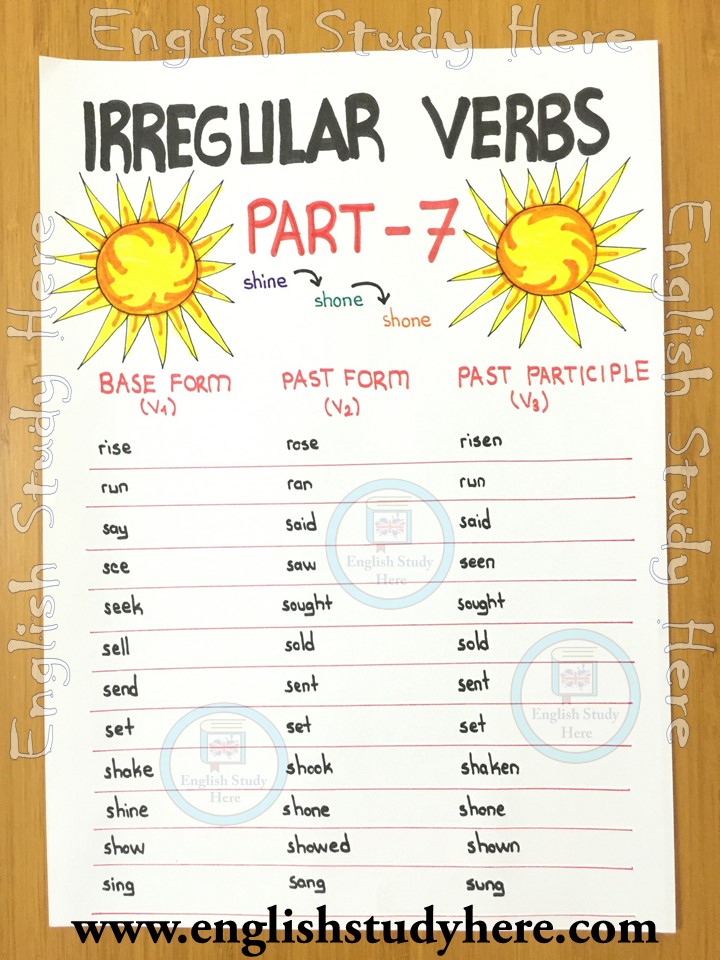9.LearnSikhna (सीखना)I have learnt English. Aasha hai ye list aapki kisi na kisi tarah madad zaroor karegi. Aapko aur better tarah se English improve karne mein toh pakka help karegi. In a semantic analysis, this use of the perfective aspect marker would not be considered perfective, since it is more closely related to subjunctive usage. Only the superficial form is identical to that of the perfective. This usage of perfective past as a future subjunctive is especially common colloquially; by describing the future action with a perfective verb and so stressing its completion.
Just like the indicative imperfect past and the indicative perfect past conjugations, the contrafactual mood conjugations are also derived from a participle form and declines the same way as them. It is constructed by taking the verb root and adding the suffix -tā to it which declines for number and gender of the noun that the pronoun refers to. Contrafactual mood conjugations for all verbs are regular. Contrafactual mood can only be used in the past tense as it expresses hypothetical scenarios that "could have" happened but didn't. It acts as both the past subjunctive and the past conditional.
Contrafactual mood conjugations of honā "to be" and rêhnā "to stay" act as copulas that mark contrafactual mood when used with aspectual participles. The indicative perfect conjugations in Hindi are derived from a participle and hence decline according to number and gender of the pronoun and not the pronoun itself. They are constructed by taking the verb root and adding the vowels -ā, -e, -ī, & -ī̃ respectively for masculine singular, masculine plural, feminine singular, and feminine plural. The perfect past conjugation also doubles as the perfective participle. Past perfect conjugations for the regular verb bolnā "to speak" (verb root is bol-) is shown below.
Past perfect tense conjugations of honā "to be" and rêhnā "to stay" act as copulas that mark future perfective subjunctive when used with aspectual participles. The only verb in Hindi that has indicative present tense forms is the verb honā "to be" and all other verbs lack this conjugation. Older forms of Hindi used to have present indicative forms but over time their meaning have change and now those forms are considered the future subjunctive forms which are discussed in the section above. These conjugations act as the present indicative copula with aspectual participles. Compound verbs, a highly visible feature of Hindi grammar, consist of a verbal stem plus a light verb. While almost any verb can act as a main verb, there is a limited set of productive light verbs.
Shown below are prominent such light verbs, with their independent meaning first outlined, followed by their semantic contribution as auxiliaries. This is because non-occurrences cannot be described to have occurred in a particular manner. The auxiliaries when combined with the main verb provides an aspectual sense to the main verb it modifies. Light verbs such as jānā "to go", ānā "to come", cuknā when combined with the main verb give the formed compound verb a perfective aspect, while retaining the original meaning of the main verb.
Hindi verbs are highly inflected in comparison to English, but markedly simple in comparison to Sanskrit, from which Hindi has inherited its verbal conjugation system . Verbs in Hindi conjugate according to mood, tense, person and number. Aspect-marking participles in Hindi mark the aspect.
Gender is not distinct in the present tense of indicative mood, however, all the participle form of verbs agree with the gender and number of the subject. Verbs in Hindi agree with the gender of the subject or the object depending on whether the subject pronoun is in the dative or ergative case or the nominative case . Helping verbs wo words hote hai jo sentence ke main verb ki help karte hai. Inhe English mein 'Auxiliary verbs' bhi kaha jata hai. Mainly 3 types ke helping verbs hote hai, jinke aage aur multiple forms hote hai.
Helping verbs jane se pehle aiye 3 main helping verbs aur unke multiple forms jaan le. Ab hum aise hi kuch helping verbs ki English to Hindi verbs list dekhenge. The only verb in Hindi that has presumptive mood conjugations is the verb honā "to be" and all other verbs lack this conjugation. These are constructed from the present subjunctive by adding the future suffix -gā.
The same conjugation is used for all three tensesː present, past, and future. Presumptive mood conjugations of honā "to be" act as copulas that mark presumptive mood when used with aspectual participles. The future subjunctive forms are constructed the following way by adding the conjugational suffixes to the verb root. The future subjunctive conjugations for the regular verb bolnā "to speak" (the verb root is bol-) is shown below. Future subjunctive conjugations of honā "to be" and rêhnā "to stay" act as copulas that mark future subjunctive when used with aspectual participles.
Hindi has distinct constructions to convey progressive and continuous actions. The verbs in the examples 1a and 2a below are in the progressive aspect while in 1b and 2b the verbs are in their perfective adjectival participle form. A verb, from the Latin verbum meaning word, is a word that in syntax conveys an action, an occurrence, or a state of being. In the usual description of English, the basic form, with or without the particle to, is the infinitive. In many languages, verbs are inflected to encode tense, aspect, mood, and voice. This article includes definition, transitive and intransitive verbs with examples, usage of verbs in sentences.
All this is simultaneously explained in Hindi and English for better understanding. You will find many verb forms in the Hindi language which have no distinct aspect. Verbs such as the future tense or imperative mood are some examples of non-aspectual verbs in Hindi.
Just like English, Hindi also has three main tenses - past, present, and future. In turn, each of these tenses has four forms - simple, continuous, perfect, and perfect continuous. Despite the similarity in their nature and classification, the significance of each tense lies in the way they are used in relation to time. It is thus very important to understand how to use tenses with particular verbs. Verb english to hindi app is an important app for learning english.
Subjunctive mood in Hindi can be put into 2 tenses, the present and future tense. The only verb in Hindi that has both the present and future subjunctive conjugations is the verb honā "to be" while all the other verbs only have the future subjunctive conjugations. Machine Translation of English text poses a great challenge in terms of occurrences of phrasal verbs.
Phrasal verbs are a commonly occurring feature of English and comprise a verb followed by a particle . Phrasal verbs have highly context-dependent meanings and may be disambiguated only by devising a technique involving utilization of semantic information pertaining to the context. We present the description of a methodology that performs semantics-based disambiguation of phrasal verbs. The module outputs Hindi equivalents of the detected phrasal verb, but the disambiguation methodology is generic and the target language may be changed with minimal effort. Friends, we have given it in PDF form which you can easily download.
Verb has three forms V1, V2, V3 and its fourth form is V4 is ing. Unlike English grammar, where only transitive verbs can have passive forms, in Hindi, intransitive verbs may also be passive. In this case, such passive verbs are used to express inability or passivity. In order to maintain effective communication, one must be able to use the appropriate tense in accordance with the situation and the time. And to do this, you have to ascertain the different aspects of Hindi verbs.
These include the state of being, the nature of action - whether it's complete or still continuing. If you can do this, you can easily conjugate verbs just by analyzing the structure of tenses. This will help you create clear and well-articulated sentences. It will also enhance readability when you are expressing something in writing, thereby making it more appealing. Hindi is an aspectually split ergative language, with the ergative case marker, -ne, appearing on the subject of the transitive perfective clauses.
Non-finite verbs do not change their forms according to the number, person or tense of the subject. The iitflnitives, gerunds and participles are called non-Jinites. The following table gives the conjugation for the verb करना / کرنا / karna "to do" —indicative mood. The root morpheme of करना / کرنا / karna is कर / کر / kar. The second column gives the conjugation in the 2nd person with तुम / تم / tum.
To conjugate the verb with तू / تو / tu, use the 3rd person singular form. To conjugate the verb with आप / آپ / ap, use the 3rd person plural form. Hindi is called a partially ergative language.
This means that there may be situations where the verb agrees with the object, but not the subject. This is in stark contrast to English grammar where the verb has to agree with the subject. It is to be remembered, however, that Hindi is only partially ergative when the verb agrees to the object in case it has both transitive and perfective properties. And some verbs are exceptions to the general rule.
The basics of Hindi lessons start with grammar and tenses. Tenses are a very important part of your lessons when you learn Hindi. Tenses in Hindi, like any other languages, gives you an idea about the time that the action took place.
So, basically they give you an idea about the time of the verb in the whole sentence. For example, "I am playing", or "I dance" are all giving you a sense of when the action has taken place or is taking place or will take place. The simple way to express the same verb in different time is to add a suffix to the tense - ing or ed, for example. Alternatively, a supporting verb can also be used. मैं अध्यापक हूँ |हम दोस्त नहीं हैं |क्या वे छात्र हैं? क्या आप हिन्दुस्तानी नहीं हैं ?
तू भाई है |तुम छात्रा नहीं हो |क्या यह आलू है ? Please fill in the blanks with suitable object to form five sentences with each pronoun given below. You can use the vocabulary list in this chapter or dictionary for any help that you need to complete this activity. The 3rd form of the verb is the past form and is used as past indefinite tense.
It does not need any helping verb to support it as such. The 4th form is the past participle which is used in forming 3 perfect tenses in active voice and all 8 tenses in the passive voice. Auxiliary verbs are used to form tenses or passive forms of other verbs. The main ones are be, do, and have.
See also modal verb.Learn more about auxiliary verbs. 3 the simple perfect verb forms when used in an if-cause or a relative clause, they would not be considered perfect indicative but instead a type of future subjunctive. Ānā "to come"Shows perfective aspect of the main verb which means givesa sense of completeness of the action, finality, or change of state. The present subjunctive conjugations for the verb honā "to be" are mentioned below.
Present subjunctive conjugations of honā "to be" act as copulas that mark present subjunctive when used with aspectual participles. Sometimes a word separates the helping verb from the main verb. For example, in the sentence, "Shyla does not want a new bicycle," the negative particle not comes between the helping verb does and the main verb want. A verb that takes an object is called a transitive verb. For example, in the sentence, "Jack threw the ball", the ball is the object of the verb threw. Therefore, you can transform an active and transitive verb into an equivalent sentence with passive verb.
In the latter, however, the object will become the subject of the sentence by adding the agentive preposition "by". List of verb होना "to be," with personal pronouns. The opposite of intransitive. See examples of transitive and intransitive verbs.
A regular word, such as a noun or a verb, has inflections that follow the normal rules. For instance, the noun cat has a regular plural with -s , and the verb to love forms its tenses in the normal way (loved; loving). Find out more about regular and irregular verbs. Verb is the word which refers to an action. We classify it into seven types according to root, object, meaning, shape, voice, usage and tense.
The first of its kind in India, the Hindi-English Verb Dictionary focuses on Hindi verbs, giving their various forms in detail. Unlike other dictionaries where verbal nouns are treated simply as verbs, here they are given separately. This book also gives importance to compound verbs and auxiliary verbs, the understanding of which is important to grasp the richness of the Hindi language. The verb honā serves as the copula whose conjugations are used to form the three aspectual forms of verbs . In the tables below all the conjugations of the copula are shown on the top and all the conjugations of the verb karnā are shown on the bottom.
Indicativepresent♂ & ♀hū̃haihoha͠iIndicative present tense conjugations of honā "to be" act as copulas that mark the indicative present tense when used with aspectual participles. The perfective aspect in Hindi is marked using the perfective participle, which is constructed by taking the verb root and suffixing -ā to it. If the verb root ends in a vowel, then -yā is suffixed to the verb root instead. It declines according to gender and number of the subject asː -ā, -e, -ī, -ī̃ for masculine singular, masculine plural, feminine singular, feminine plural, respectively.
In the above examples, there are Hindi verbal constructions which can be grouped into two categories of complex verbs in Hindi, namely, conjunct verbs and compound verbs. The example in , on the other hand, is considered be compound verbs since the predicates exhibits two or more than two verbal elements, bol 'tell', denā 'give', and diyā 'gave'. The intransitive verbs are formed with the help of verbs such as honā 'to be/happen', lagnā 'to feel', ānā 'to come' etc. The transitive verbs are obtained by combining nouns/adjectives with verbs such as karnā 'to do', lenā 'to take', denā 'to give', jītnā 'to win' etc. Infinitives verbs ek basic form of verb hai, jiske saath humesha'to' shabd ka prayog kiya jata hai.



























No comments:
Post a Comment
Note: Only a member of this blog may post a comment.